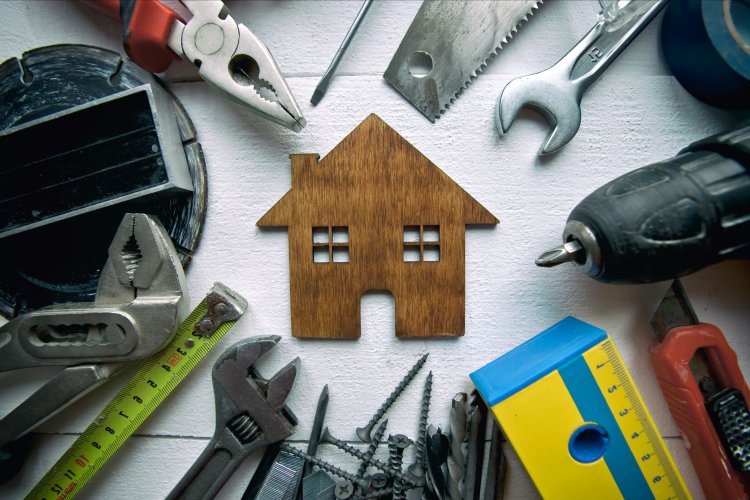
The biggest barrier to completing energy-efficient home improvements for some customers is unsurmountable health and safety hazards. When energy auditors identify health and safety hazards or items in the home that prevent the upgrades, commonly referred to as pre-weatherization work, the work in the home must be put on pause, or deferred, until the hazardous conditions are remedied. This presents a particular challenge for low-income customers, who often cannot take on the financial burden of completing the pre-weatherization work on their own. The Partners for Energy Efficiency, a collective of northern Illinois utilities, were able to jointly fund some of the necessary repairs together through their shared Home Energy Savings (HES) offering, but more support was needed.
At the end of 2022, MEEA was awarded two grants through the Affordable Housing Program (AHP) of the Federal Home Loan Bank (FHLB) of Chicago to address this very issue. AHP subsidies are a competitive funding source, designed to support projects serving very low to moderate income homeowners in housing acquisition, construction and/ or rehabilitation. In partnership with ComEd, Nicor Gas, Peoples Gas and North Shore Gas, along with FHLB member Providence Bank, MEEA has been able to use the FHLB grant to supplement the existing HES offering’s funding to address the health and safety concerns that were previously preventing homeowners from moving forward with major improvements. Pooling resources, MEEA and the Partners for Energy Efficiency launched the Helping Homes pilot.
“ComEd is proud to stand beside MEEA, FHLBank and our area natural gas utilities to ensure the benefits of energy efficiency technologies and services flow equitably to households with the greatest need,” said Denise Munoz, ComEd’s director of Strategy and Innovation and MEEA board member. “This includes the ability to address health and safety issues that help more families take advantage of programs that can save energy and manage bills through the life of their homes.”
One of the AHP grants serves homeowners in suburban Cook County and the other serves the City of Chicago. The MEEA team’s grant application focused on low to moderate income owner-occupied, single-family homes within underserved communities. To participate in Helping Homes, customers need to provide income documentation from all household members to verify their eligibility. It is designed to provide customers who would not be able to afford the repairs with the relief they need.
“The Peoples Gas and North Shore Gas Energy Efficiency Programs work every day to ensure low-income customers receive the many benefits of energy efficiency, including saving energy and improving the comfort and safety of their homes,” said Christina Frank, director or Energy Efficiency and C&I Customer Strategy and MEEA board member. “The Helping Homes program and our partnership with MEEA, FHLB and our neighboring utilities helps ensure we can provide these services to homes that would benefit the most.”
During the first year and half of the Helping Homes pilot, MEEA worked closely with utility teams to design processes that ensure the homes being served meet AHP requirements, support high-need homeowners, and streamline the customer experience through both Helping Homes and HES. Many homeowners are motivated to work with the team because pre-weatherization work is often too costly for homeowners to resolve on their own and Helping Homes provides an easy opportunity for eligible homeowners to receive the necessary improvements at no cost.
“We want to ensure that our customers have access to energy-efficient services that contribute positively to their health, wellbeing and comfort,” said Mike King, director of Energy Efficiency Strategy and Solutions for Nicor Gas. “Working with our utility partners, we have been able to make a difference in the lives of thousands of customers who previously were unable to make critical weatherization home improvements. By partnering with MEEA, we have been able to further expand our reach to support even more residents through health and safety mitigations. Our customers are at the center of everything that we do, and Helping Homes helps us offer more services to more residents.”
Last year, Helping Homes identified 21 total candidates and completed construction on six homes, resulting in more than $135,000 in rehabilitation costs. Close to $75,000 of the funding was provided through AHP. The improvements that were covered by AHP included roof repairs, mold remediation and other pre-weatherization measures, assisting participants along their journey to achieving a healthier, more efficient home.
Damon from Chicago’s Calumet Heights neighborhood was one of Helping Homes' first participants. Before he could be eligible to participate in HES, he needed chimney and ceiling repairs. He was pleased with the results.
“You can feel a whole difference in the house,” Damon said. ”It’s been nice and my bills went down.”
Tasha from Chicago’s Auburn Gresham neighborhood said that she no longer worries about her roof leaking when it rains after she had it repaired through the offering.
"Helping Homes was very efficient with the process,” Tasha said. “I just sent over the necessary documents, and days later, they came and fixed my roof. It was a great blessing for me.”
Helping Homes goal this year is to assist 19 more homeowners in the city of Chicago and 23 more in the surrounding suburban area.
If you would like to learn more about Helping Homes offering, you can reach out to Miranda Andrade, MEEA’s associate for Market Solutions & Education, or email helpinghomes@mwalliance.org.